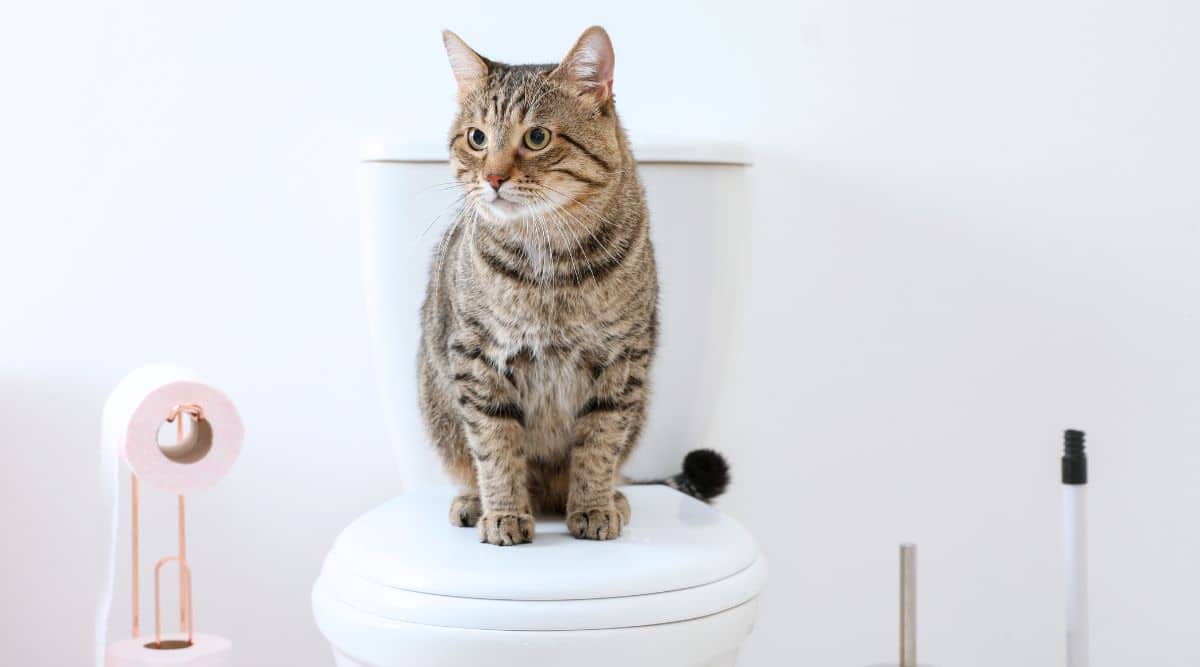Our Effects of Flushing Animal Waste Down the Toilet
Our Effects of Flushing Animal Waste Down the Toilet
Blog Article
The author is making several good pointers regarding Can You Flush Dog and Cat Poo Down the Toilet? in general in the article which follows.

When it involves disposing of waste, especially animal waste, many individuals commonly resort to the hassle-free option of flushing it down the toilet. Nevertheless, this apparently easy option can have serious consequences for the environment and public health. In this write-up, we'll discover why flushing animal waste down the toilet is a bad idea and provide alternative methods for proper disposal.
Intro
Correct garbage disposal is crucial for maintaining ecological sustainability and public health. While it might seem harmless to purge animal waste down the commode, it can cause numerous problems, both for the atmosphere and human well-being.
Threats of flushing animal waste
Environmental influence
Flushing pet waste presents hazardous microorganisms and microorganisms into rivers, which can negatively influence aquatic ecosystems. These microorganisms can infect water sources and harm aquatic life, disrupting fragile ecosystems.
Public health issues
Pet waste contains dangerous bacteria such as E. coli and Salmonella, which can pose serious health risks to people. Flushing animal waste down the toilet can contaminate water products, bring about the spread of conditions and infections.
Alternatives to flushing
As opposed to purging animal waste down the toilet, there are numerous different disposal approaches that are a lot more environmentally friendly and hygienic.
Composting
Composting pet waste is a green method to get rid of it. By composting, organic matter is broken down right into nutrient-rich soil, which can be made use of to feed gardens and plants.
Land fill disposal
Disposing of pet waste in a garbage dump is one more choice. While not as eco-friendly as composting, it is a more secure option to flushing, as it stops the contamination of water sources.
Family pet waste disposal systems
There are specialized animal garbage disposal systems offered that securely and hygienically deal with animal waste. These systems typically make use of enzymes to break down waste and eliminate smells.
Actions to proper animal garbage disposal
To ensure correct disposal of pet waste, follow these steps:
Scooping and getting waste
Routinely scoop and bag animal waste utilizing eco-friendly bags. This protects against waste from contaminating the environment.
Using assigned waste containers
Dispose of bagged animal waste in designated waste bins, such as compost containers or land fill containers. Prevent flushing it down the toilet at all costs.
Cleaning litter boxes and animal areas regularly
Consistently tidy litter boxes and pet dog areas to prevent the accumulation of waste and microorganisms. Use pet-safe cleansing products to keep hygiene.
Advantages of appropriate disposal approaches
Taking on appropriate disposal approaches for pet waste offers a number of benefits:
Lowered environmental pollution
Appropriate disposal approaches reduce the danger of environmental pollution, protecting waterways and ecological communities from contamination
Reduced danger of water contamination.
By staying clear of flushing animal waste down the commode, the risk of water contamination is considerably minimized, guarding public health.
Improved sanitation and hygiene
Appropriate disposal techniques advertise much better hygiene and health, producing a much safer atmosphere for both human beings and pets.
Verdict
Finally, purging animal waste down the bathroom is dangerous to the setting and public health. By embracing alternate disposal methods and following correct waste more info administration practices, we can decrease the negative influence of animal waste and add to a cleaner, healthier earth.
What To Do With Dog Poo – The Do's And Don'ts Of Disposing Of Faeces
Dog poo bins
Some councils provide dedicated dog waste bins in popular dog-walking areas that can take dog poo that has been bagged but you can legally dispose of dog waste in any public litter bin, as long as it is securely bagged. This also applies to your wheelie bin at home.
Do not flush
Water companies do not recommend flushing dog faeces down the toilet because certain parasites can survive the water processing treatment and are potentially harmful to humans. You should also never consider flushing dog poo that has been bagged down the toilet as the bags will not break down and instead create severe blockages in the sewage system.
In the woods
The Forestry Commission promotes a ‘stick and flick’ method for dealing with waste in the woods. This means finding a stick and using it to flick any poo from off the path so that it is out of the way of other walkers. You could also bury it as long as it is not in an area where there might be livestock.
Livestock
Parasites found in dog poo can be transmitted to livestock if they inadvertently eat infected faeces that has been left on grazing land. This could result in the death of sheep or abortion in cattle so you should always make sure you pick up your dog’s waste in fields where livestock could be present.

Consistently tidy litter boxes and pet dog areas to prevent the accumulation of waste and microorganisms. Use pet-safe cleansing products to keep hygiene.
Advantages of appropriate disposal approaches
Taking on appropriate disposal approaches for pet waste offers a number of benefits:
Lowered environmental pollution
Appropriate disposal approaches reduce the danger of environmental pollution, protecting waterways and ecological communities from contamination
Reduced danger of water contamination.
By staying clear of flushing animal waste down the commode, the risk of water contamination is considerably minimized, guarding public health.
Improved sanitation and hygiene
Appropriate disposal techniques advertise much better hygiene and health, producing a much safer atmosphere for both human beings and pets.
Verdict
Finally, purging animal waste down the bathroom is dangerous to the setting and public health. By embracing alternate disposal methods and following correct waste more info administration practices, we can decrease the negative influence of animal waste and add to a cleaner, healthier earth.
What To Do With Dog Poo – The Do's And Don'ts Of Disposing Of Faeces
Dog poo bins
Some councils provide dedicated dog waste bins in popular dog-walking areas that can take dog poo that has been bagged but you can legally dispose of dog waste in any public litter bin, as long as it is securely bagged. This also applies to your wheelie bin at home.
Do not flush
Water companies do not recommend flushing dog faeces down the toilet because certain parasites can survive the water processing treatment and are potentially harmful to humans. You should also never consider flushing dog poo that has been bagged down the toilet as the bags will not break down and instead create severe blockages in the sewage system.
In the woods
The Forestry Commission promotes a ‘stick and flick’ method for dealing with waste in the woods. This means finding a stick and using it to flick any poo from off the path so that it is out of the way of other walkers. You could also bury it as long as it is not in an area where there might be livestock.
Livestock
Parasites found in dog poo can be transmitted to livestock if they inadvertently eat infected faeces that has been left on grazing land. This could result in the death of sheep or abortion in cattle so you should always make sure you pick up your dog’s waste in fields where livestock could be present.

As a passionate reader about Don't Flush Your Pets Poo Down The Loo, Vet Warns, I think sharing that excerpt was really useful. Those who liked our blog entry kindly make sure you remember to pass it around. I am grateful for your time. Kindly come visit our blog back soon.
Book Report this page